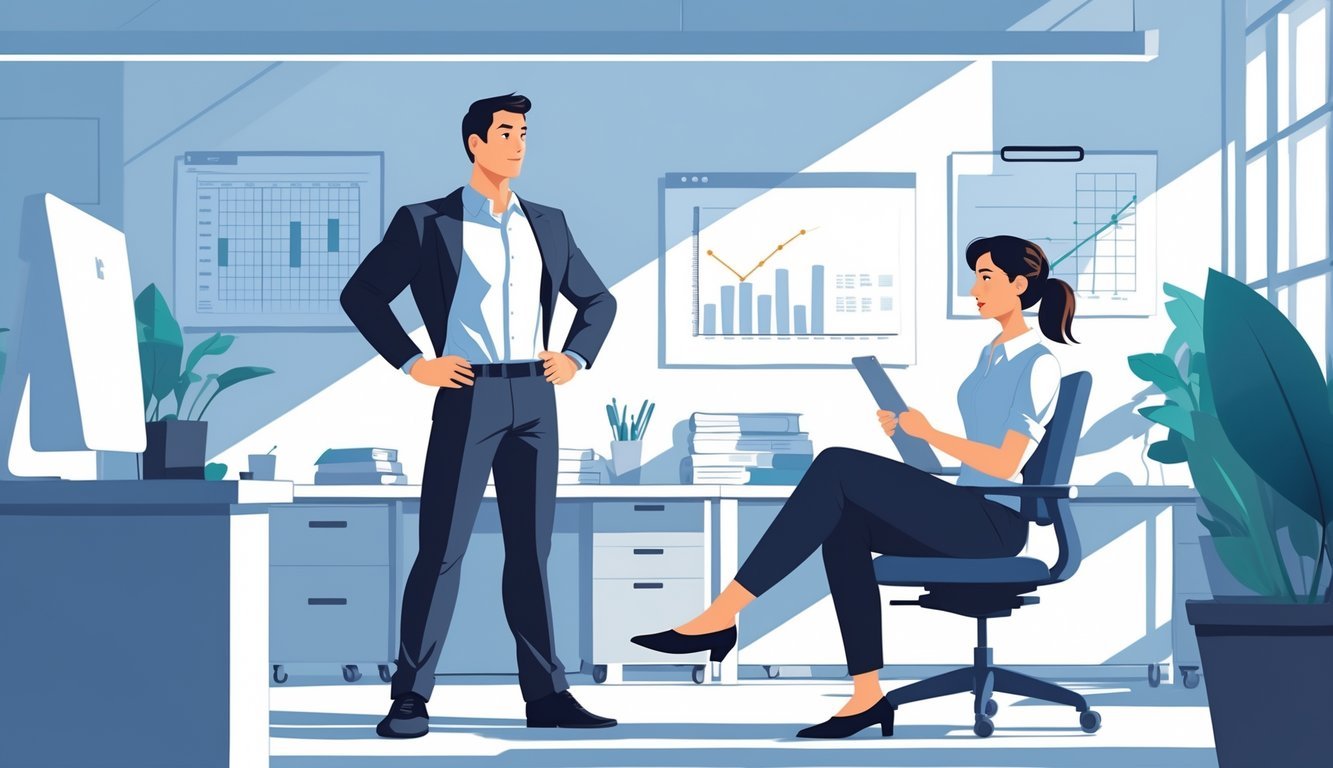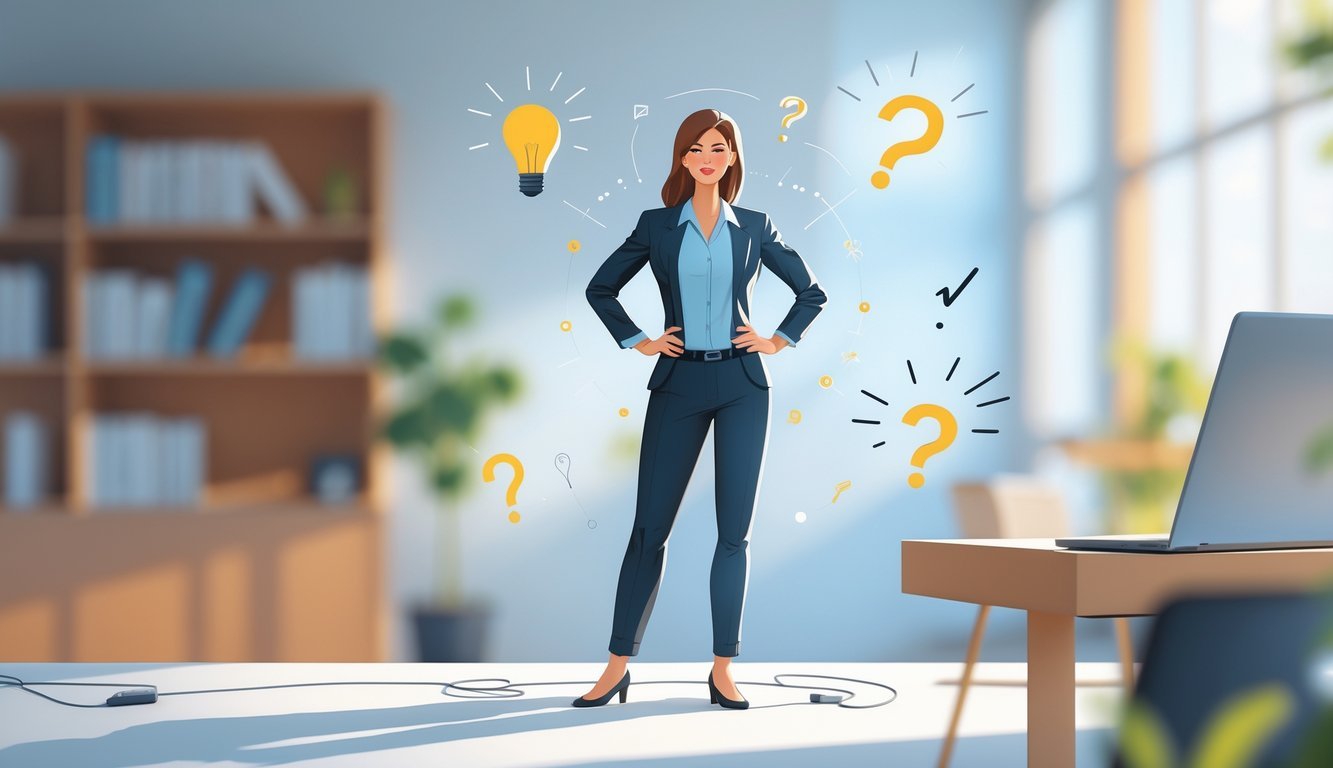PsychNewsDaily Publishers
100 Summit Drive
Burlington, MA, 01803
Telephone: (320) 349-2484
PsychNewsDaily Publishers
100 Summit Drive
Burlington, MA, 01803
Telephone: (320) 349-2484
Power posing involves adopting open body language to boost confidence, though recent studies question its hormonal effects, highlighting the importance of posture and personal comfort.

Power posing used to get a lot of hype as a quick fix for confidence and stress. Lately, though, researchers have poked holes in those early claims. Some even say the original effects just don’t show up in the real world.
Still, not everything about power posing is a lost cause—body language can absolutely help you feel more in control if you use it the right way.
The basic idea is pretty straightforward: if you stand or sit in a more open, strong posture, you show confidence to yourself and others. It won’t magically change your hormones or turn you into a superhero, but it might help you look more self-assured and shift your mindset a bit.
Try to notice how small tweaks in your posture affect your mood. Sometimes it’s just enough to help you feel a little braver.
If you want power posing to actually help, focus on what feels natural for you. Forget forcing yourself into some “superhero” stance that feels awkward. Go for poses that help you relax and feel steady. That’s where people seem to get the best results.

Power posing blew up because it seemed like a simple trick—just change your body language, and you’ll feel more confident and powerful. Amy Cuddy, especially through her TED Talk, pushed these ideas into the mainstream.
But over time, scientists started to question whether the research really held up. The effects seemed less impressive when others tried to repeat the studies.
Amy Cuddy, a social psychologist from Harvard, made power posing famous. In her 2012 TED Talk, she described how standing or sitting in big, open postures—so-called power poses—could boost your confidence and maybe even shift hormones like testosterone and cortisol.
Her talk racked up over 60 million views. People started using power posing before interviews or big presentations. The idea seemed easy to try and, at first, looked backed by science. It gave folks a new way to tackle stressful moments.
Power poses are just certain ways of holding your body to make you feel stronger. For instance, if you stand with your chest out and arms wide, that’s a power pose.
Originally, researchers claimed that holding a pose for a minute or two could bump up testosterone, lower cortisol (the stress hormone), and help you succeed in social situations. Supposedly, these hormone changes would make you more willing to take risks and feel confident.
They even thought power posing could help you perform better in job interviews or negotiations. It sounded like a quick way to “hack” your body to help your mind.
Things started to unravel when other scientists tried to repeat the original power posing studies and got different results. Dana Carney, one of the co-authors, later said she didn’t believe in those strong effects anymore.
Critics pointed out problems like tiny sample sizes and questionable research methods. Some accused researchers of p-hacking—tweaking analyses to get exciting results.
This is all part of a bigger replication crisis in social psychology, where lots of famous findings have fallen apart under scrutiny. Some studies say power posing might change how you feel, but not your hormones or actual behavior. Amy Cuddy still stands by her work, arguing that feeling more powerful has value, even if hormone changes aren’t clear.
| Key Issues | Details |
|---|---|
| Replication Failures | Many studies couldn’t duplicate the hormone and behavior findings |
| Dana Carney’s Stance | Co-author doubts the real effects of power poses |
| Methodological Concerns | P-hacking and small samples questioned |
| Current Understanding | Power posing may influence feelings, less clear on physical changes |

If you want to feel more confident and powerful, just changing your body isn’t always enough. What really matters is how your body language, mindset, and the situation all interact.
Researchers have found that posture can influence feelings like confidence, but these effects depend on lots of factors—including your personality and the context.
Your posture and body language affect how confident and present you feel. If you stand tall and keep your arms open, you often look more assertive to others and feel more in control yourself.
A quick pose won’t fix everything, but keeping good posture regularly can help your confidence build over time.
Presence is about how much space you take up and how you interact with your environment. When you act confident with steady body language, people usually pay more attention and respect you. This is especially true in public speaking, where your gestures and stance can back up your words.
Studies show mixed results for power posing’s effects on your body and brain. A lot of the early research depended on self-report—asking people how they felt after posing.
There’s not much solid evidence that power poses change stress hormones like cortisol in a big way.
Researchers also used behavioral tasks, like gambling games or the Implicit Association Test (IAT), to see if posture changed risk-taking or bias. Most of the time, brief poses didn’t lead to better performance in these tasks.
It looks like feeling confident comes more from what you think than from any real hormonal or cognitive shifts.
Using body language to boost your confidence works best alongside other skills. In public speaking, for example, standing tall and making eye contact helps you look assertive and connect with people.
In everyday situations—like negotiating or sharing your opinion—steady, open postures can help you come across as trustworthy and in control. But honestly, most of your confidence grows from practice and experience, not just holding a pose for a minute.
Body language doesn’t work the same for everyone or in every situation. There’s a gender gap—men and women might react differently to the same poses, partly because of social expectations.
Context matters a lot. The right posture for a formal meeting isn’t always the same as what you’d use in casual conversation or even on a video call. Learning when and how to use open postures can help you feel more authentic and comfortable.

Power posing means standing or sitting in ways that make you look or feel bigger and more powerful. Some research finds small effects on stress and confidence, but the bigger picture is still pretty murky. You can experiment with different poses to see what actually helps you.
Power poses usually involve opening up your body. For example, you might stand with your hands on your hips like Wonder Woman, or lean back in a chair with your arms stretched out.
These poses let you take up more space and might give you a little confidence boost.
Some early studies claimed strong effects on confidence and hormones. Later research—including from one of the original authors—couldn’t find much evidence to back up those claims.
So, power posing isn’t seen as a magic trick that changes your mind or behavior.
Power posing might help reduce stress a bit, especially by lowering cortisol in some cases. It can also give you a short-lived boost in confidence.
But honestly, these effects tend to be small and don’t last very long.
Some studies found that power poses might lower cortisol and raise testosterone, which could make you feel more confident or willing to take risks.
Newer research hasn’t really confirmed these effects, though, so don’t count on it.
You might try a power pose before a job interview, a presentation, or any time you need a quick confidence boost. It can help you feel a little more in control and calm.
Just remember, it’s only one tool among many for preparing yourself.
Power posing comes from the belief that the way you hold your body can actually influence how you feel and act. If you stand or sit in a powerful pose, your brain might notice and help you feel more confident.
People often talk about how body language connects with the mind. Still, honestly, experts don’t all agree on how strong this connection really is.